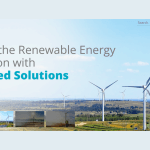Deep Sky Deploys Airbus Direct Air Capture Technology at Flagship Carbon Removal Facility

• Airbus delivers a 250-ton-per-year DAC unit to Deep Sky Alpha after eight months of engineering and manufacturing
• Facility becomes a global testbed for next-generation carbon removal technologies, supported by major corporate buyers
• Deployment follows a US$40 million Breakthrough Energy Catalyst grant and long-term offtake deals with RBC and Microsoft
A New Phase for Industrial DAC in Western Canada
Deep Sky has begun operating a Direct Air Capture system developed by Airbus at its Deep Sky Alpha site, advancing Canada’s role in the race to build a scalable carbon removal industry. The unit, designed to capture 250 tons of CO2 annually, arrived only eight months after engineering work began, illustrating the speed with which aerospace-derived technologies are moving into climate-tech deployment.
The modular system is based on life-support technology created by Airbus Defence and Space for the International Space Station. Adapted for terrestrial use and commercialised in 2023, the unit captures CO2 directly from ambient air using a solid amine-based filter. Once saturated, the filter is heated to release a high-purity stream of CO2 while returning CO2-lean air back to the atmosphere. Airbus has also configured the module’s energy loop to recover and reuse heat in order to reduce operating demand.
A Platform Built for Scaling Carbon Removal
Deep Sky CEO Alex Petre said the ability to scale DAC is central to its mission. “In order for carbon dioxide removal to have an impact, we need to develop technologies that can rapidly scale to remove billions of tons of CO2 from the atmosphere,” she said. “We’re incredibly pleased to be hosting Airbus technology in Canada and look forward to a continued partnership in the future.”

Deep Sky Alpha, which began operating earlier this year, positions itself as the world’s first dedicated carbon removal innovation and commercialisation centre. The site acts as a proving ground for multiple DAC developers, allowing systems to be tested, optimised, and validated at a consistent location while generating carbon removal credits for early buyers.
Airbus becomes the latest company to install technology at the facility, joining Airhive, Phlair, MissionZero, Skyrenu, Skytree, Carbon Capture Inc. and GE Vernova. For investors and buyers watching the sector, the convergence of many competing DAC designs at a single operating site offers a rare comparative environment to assess energy efficiency, cost trajectory, and long-term scalability.
Financing Momentum and Corporate Demand
The Airbus deployment builds on significant financial commitments secured over the past year. In December 2024, Deep Sky received a US$40 million grant commitment from Breakthrough Energy Catalyst, its first investment in a Canadian project and its first support for Direct Air Capture technology. The Catalyst programme is known for backing climate technologies that require large early-stage capital infusions to reach commercial scale.
Corporate credit buyers are also playing a strategic role. In November 2024, Deep Sky announced that Royal Bank of Canada and Microsoft would become founding buyers of carbon removal credits from the company, committing to purchase 10,000 tonnes of CO2 removal over a 10-year period, with options to expand up to 1 million tonnes as projects mature. Those long-term agreements provide the type of demand certainty that investors and technology providers increasingly look for when evaluating climate-tech ventures.
RELATED ARTICLE: Deep Sky to Build 500,000-Tonne Carbon Removal Facility in Canada
Why the Deployment Matters for Climate and Capital Markets
The Airbus DAC unit is small relative to the gigaton-scale removal needs identified by the IPCC, but it represents a broader shift: climate-tech firms are moving from laboratory prototypes to industrial integration at a pace not seen five years ago. Aerospace-grade engineering entering the carbon removal sector also expands the ecosystem of actors capable of driving cost reductions and reliability improvements.
For corporate sustainability leaders, the project acts as an early example of how diversified DAC portfolios may evolve. Multiple technologies operating on one site allow for clearer benchmarking of operational efficiency, which in turn supports more transparent carbon-removal credit markets. For policymakers, the deployment demonstrates how public-private financing models—grants, long-term offtakes, and technology-development partnerships—can accelerate the most capital-intensive segments of climate infrastructure.
A Growing Hub for Global Carbon Removal Efforts
Canada is positioning itself as a North American anchor for the emerging CDR sector, supported by federal incentives, provincial interest in clean-tech manufacturing, and an expanding corporate buyer base. Deep Sky’s partnership with Airbus, layered onto commitments from Breakthrough Energy Catalyst, RBC, and Microsoft, reinforces that trajectory. As new units come online and performance data accumulates, Deep Sky Alpha is likely to become an influential reference site for investors, credit buyers, and regulators evaluating DAC’s role in achieving mid-century climate goals.
Follow ESG News on LinkedIn








